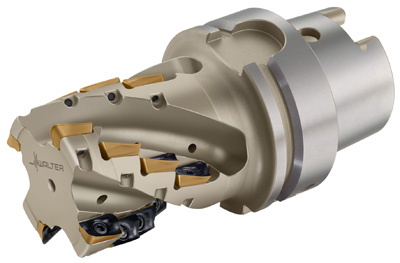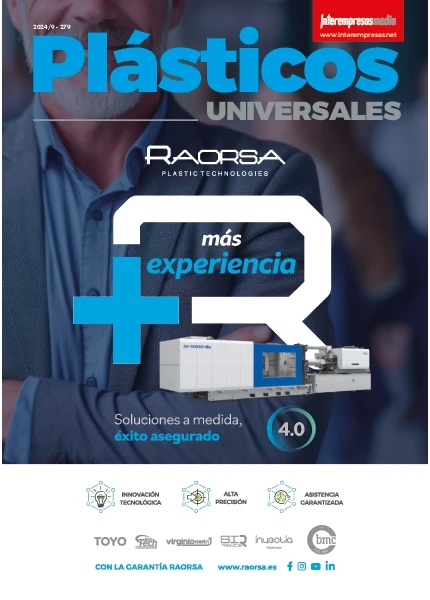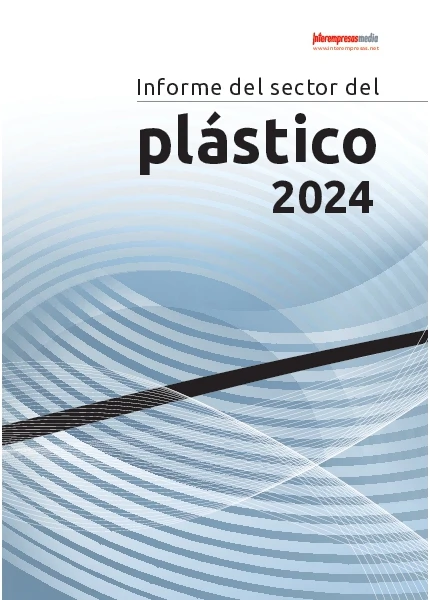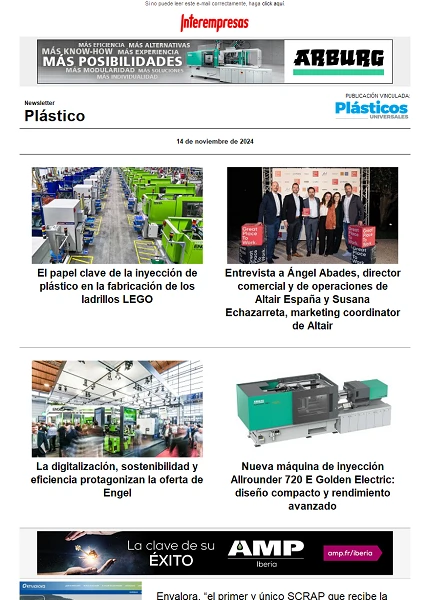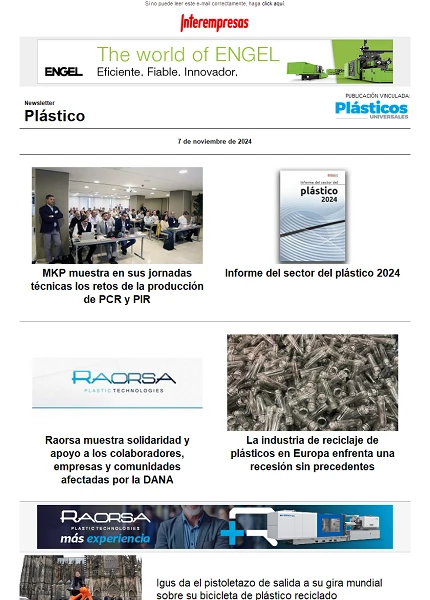In Walter work in the development of tools based on titanium
October 15, 2010
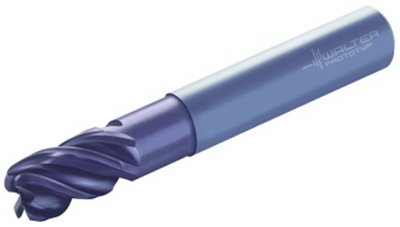
According to the aircraft manufacturers, has doubled the amount of titanium which flies across our sky. New generations of airliners like the Boeing Dreamliner or Airbus A350 XWB are in alloy of titanium in 15-20% approximately, while the proportion of the generation currently in service is only 7%. The increase in the amount of titanium components is only half the story. The other is up to the introduction of modern alloys. In addition to the alloy conventional Ti6Al4V for the construction of aircraft, the new material Ti5553 (Ti-5Al-5V-5Mo-3Cr) is also increasingly more relevant. The main advantage of this high quality material is its greater resistance to temperature. The first components of the 'Titanium triple five three', so called it internally, already used in the production, but it will still take some time until jump-start at the international level. In the aerospace industry, the new needs time before its release because every change involves thorough research in the laboratory and follow procedures of approval.
The reason why titanium materials are recognized as an integral part of the aerospace industry is evident to note that about 80% of the applications belong to this industry. As a result, the large number of applications has a volume of High Court. This is due to the typical contour associated with aerospace engineering: the walls of the manufactured components are fine, its highly complex forms. Common processes include the milling of deep cavities. Other important sectors that is machined titanium are motorcycling, medicine, and chemical industries. In medicine, the Ti6Al4V alloy for the construction of aircraft is used, for example, to implant Osteoarticular. In addition to being aeronavegable, this material has good compatibility with tissues.
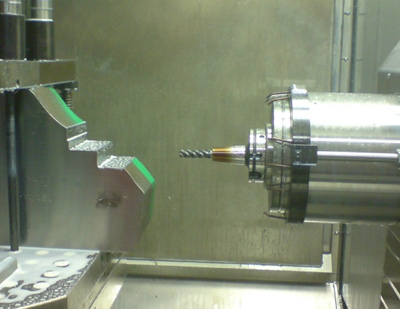
There are three factors which make it difficult for the life of the tools used in machining of titanium: an extremely poor thermal conductivity (Ti6Al4V = 7,56 W/mK; steel Ck45 = 51,9 W/mK), a relatively low modulus of elasticity (Ti6Al4V = 110 kN/mm2; steel Ck45 = 210 kN/mm2) and a clear tendency to engomar is. The heat is largely led by the edge and not by the chip, as in the case of the steel. As the Court is rather shallow, a small part of the lip of court must be able to withstand extremely high thermal and mechanical loads. These conditions make them wet machining is essential. Low modulus of elasticity then causes oscillations, while the accumulation in the edge due to the trend of engomar is exacerbating the effect. As a result, the cutting speed must be reduced significantly.
A tough nut to crack: Ti5553
With the new material Ti5553, it's not easy, but that the problem gets worse. Ti6Al4V is an Alpha with a proportion alloy balanced mircroestructuras (Alpha = hexagonal microstructure, beta = body-centered cubic microstructure). On the other hand, Ti5553 has a higher content of beta and is known as close to the beta alloy. This not only provides the material a greater resistance to temperature, as mentioned above, but it still more difficult cutting material. 430 Degrees Celsius, Ti5553 continues to have a tensile strength of approximately 900 N/mm2. The trend of engomar is intensifies through the content of the beta microstructure.
Faced with this situation, Josef Giessler, round tools in Walter AG Development Manager stresses that "the machining titanium Professional requires optimized tools". Up to about 20-25 mm diameter, these are usually solid carbide tools. The developer adds: "the tools should be ingenierizarse in such a way that will minimize the oscillation and is contrarrestre the formation of accumulation on the cutting edge." "Therefore, need a design without vibration marks." The most important means of adaptation are the macrogeometría, the microgeometría and surfaces. It will try and check if the spacing of the teeth is irregular and if narrow bezels of support in the phylum have an angle of outlet of zero. Polished attack angles improve the properties of the boot of chip flow. The coatings are based on AlCrN because the coating of carbide based on titanium which is normally used with steel are incompatible with solid carbide tools. It is also important that the coolant supply is internal so heat generated on the cutting edge for jointing operations can dissipate more effectively.
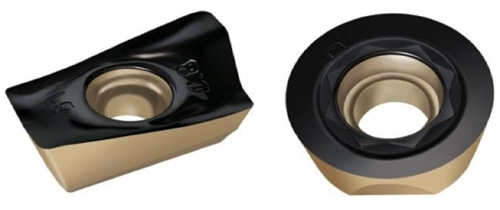
Fortunately, the mark Walter prototypes has ingenierizado the solution: Strawberry Duo Protostar with solid carbide stem Ti40/Ti45, for example, contains all the necessary attributes. The Ti40 is a tool of jointing with internal cooling, the Ti45 is a tool for finishing. Launch to the market in 2007, the Ti40 marked a new era in the engineering of the tools for the processing of the titanium. The project carried out in collaboration with Airbus produced a positive result for cutting tools: the Ti40 doubles the volume of court preparation with Ti6Al4V operations. Until then, the maximum cutting speed was approximately 80 cm3/min (Vc = 25 m/min) and it could be achieved using tools HSS-E with 32 mm in diameter. At Airbus, this value was already carried out in the mid-1990s, but since then had not been able to make progress, and for managers in productivity, is a long time without making any improvements. The new generation of solid carbide tools increases the benchmark significantly, up to 160-200 cm3/min (Vc = 50 - 60 m/min) with a diameter of 25 mm tool This shows that the subsequent development of strawberries with stem HSS has reached its maximum level. Upgrades require completely new concepts. It has been able to take a decisive step thanks to the development of new compatible with titanium carbide substrates. "The latest generation of strawberries of solid carbide, Ti40/Ti45, is made in an extremely rugged and relatively immune to vibrations Carbide." "This has been available for a few years", he remarks Josef Giessler.
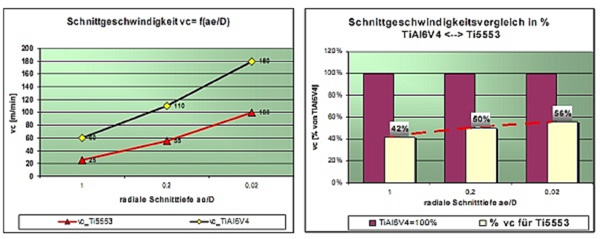
Walter specialists conducted further trials with material Ti5553 in its own technological centre. The objective was to determine how the new generation of solid carbide tools made from this material. The piece of evidence had a tensile strength of 1,400 N/mm2 and a Brinell hardness of 430. It was a Protostar Ti40 with a diameter of 16 mm and z = 4. As it was expected, court data should reduce significantly in comparison with Ti6Al4V. The following recommendations for different types of use, to a diameter of 16 mm tool were established:
- Milling of grooves (ae = 16 mm, ap = 8 mm): Vc = 25 m/min, fz = 0.06 mm
- Side milling, jointing (ae = 4 mm, ap = 8 mm): Vc = 50 m/min, fz = 0.08 mm
- Side milling, finishing (ae = 0.3 mm, ap = 50 mm): Vc = 100 m/min, fz = 0.12 mm
The results are shown in the tables below (Figures 4a, b). Ti6Al4V and Ti5553 cutting speeds are determined according to the radial depth of cut (ae/D). In the case of the material Ti5553 is necessary to reduce the cutting speed around a 50% (half machining). The trend shows that the milling of grooves requires more reduction, while in the case of the side finish, the need is lower.

When Court workload is considerable are necessary indexable inserts
The major components or applications which have to withdraw much volume of court, require great tools such as, for example, indexable insertion tools. Inserts in recent years development has followed a course similar to the of solid carbide tools. The main focus of attention has been the materials with difficult cutting properties. This group (ISO-S) includes titanium alloys. Currently, court materials that make up the ship insignia of Walter are Tiger·tec degrees covered with oxide of aluminium PVD ('PVD-Tiger'). Currently, there are available two degrees: WSM35 with a high resistance to wear and tear to good machining conditions, and WSP45 with more tenacity to the difficult conditions. "As the Ti5553 alloy requires a very high level of potential of tenacity, the degree WSP45 PVD-Tiger·tec comes to light as the first choice due to its suitability to meet this requirement of tenacity", explains Siegfried Bohnet, developer of indexable insertion tools, Walter.

With the introduction of the developing countries-Tiger, specialists in Tübingen conceived another project whose purpose was to develop geometries optimised for aerospace applications. The G77 geometry was designed as a primary application for titanium alloys. The most striking feature of this geometry is its high angle of attack of 20 degrees. To which is added a special type of microgeometría. Siegfried Bohnet continues: "the development has managed to combine several attributes and technologies: Tiger·tec technology, the technology of PVD coating, a highly positive geometric form and a special kind of rounded edges." "The novelty is that these four aspects have been combined in the same package." This package to be released is available since recently in the new inserts in the form of ADGT (strawberries from escuadrar, strawberries Hedgehog) and RO.X (round inclusion strawberries). Thanks to this combination of attributes, it now sets the standard for indexable inclusion solutions in aerospace applications or titanium.
